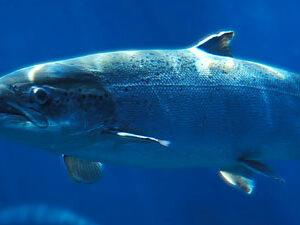Government is using a suspiciously-timed review to delay taking action to protect wild species
Imagine you have waited 23 years for renovations on your home and on the day the carpenters finally show up, the painters arrive too. You might scream at the painters, “Really? Now?”
That’s how it feels with the fixes to the Canadian Environmental Protection Act, 1999 (CEPA) that Nature Canada has been calling for. Improvements to CEPA have been recommended for many years and are long overdue.
CEPA is the law meant to assess and manage “substances,” including chemicals and genetically-engineered (GE) organisms.
Early this year the Government introduced Bill S-5, a bill to amend CEPA. The bill is now before the House of Commons environment committee where MPs will consider amendments, including from Nature Canada. This is a critical moment.
And then, just weeks ago, Environment Canada announced a review of the CEPA regulations that govern genetically engineered animals, releasing a discussion paper and asking for comments. (Regulations sit under a parent Act but are separate from it.)
It’s not as though the Government had no room to manoeuvre. Neither the Act nor the regulations have been substantially amended in 23 years, despite plenty of evidence that changes are needed. There was plenty of time to review the regulations well before Bill S-5 entered Parliament.
Suspicious timing for a review
What is most suspicious about the timing is that Environment Canada is rejecting the amendments Nature Canada is proposing to the Act, saying that they don’t want to touch the sections of the Act related to genetic engineering until they’ve reviewed the regulations!
This is from page 3 of the consultation document:
“If, however, from the analysis of issues it is determined that strengthening authorities under CEPA Part 6 is necessary, these can be addressed with legislative changes at a later date.”
That ‘later date’ could turn out to be five, ten or another 23 years.
So Nature Canada is saying to Environment Canada, “You’ve had 23 years to review the regulations. Canadians and nature cannot wait another 10 or 23 years until the Act is back in Parliament. Amend the Act now!”
To be clear, we do think Environment Canada should review and improve the regulations.
The consultation document from ECCC contains useful background and data on applications for organisms new to Canada, both engineered and non-engineered. Notable is that the rate of applications for new genetically engineered animals is increasing, including for higher organisms like the transgenic salmon that is being sold now, unlabelled as a GE product. You may have unknowingly eaten some for supper last night.
ECCC lists the ”drivers” for the review as improving transparency, responding to advances in technology, and reducing regulatory inefficiencies.
On transparency, ECCC seems content with maintaining the status quo, which is voluntary (if the proponent agrees) public consultation for new genetically engineered organisms. Despite labelling being required in most other OECD nations, Canada is lukewarm towards mandatory labelling of genetically modified organisms. In contrast, Nature Canada is calling for major upgrades in engagement and transparency.
In terms of advances in technology, the document describes the increased use of genetic engineering in food production and medicine, including recognizing an often overlooked corner of this industry, the rise of DIY genetic engineering or biohacking. Engineering new organisms in your basement should definitely be on ECCC’s radar.
The document feels as if it is written primarily for the biotech industry so it is not surprising that reducing regulatory burden features prominently. Eliminating genuine regulatory inefficiencies is fine, but not at the expense of human health or the environment.
Glaring oversights in the review
There is a lot missing in this document. There is no mention of Indigenous Peoples’ rights and knowledge, which is a big omission. Altering the genome of a culturally important species like salmon should raise questions of consultation and consent.
The document does not mention Canada was the first country to approve a genetically engineered salmon and Canadians were the first people in the world to eat it. There is also no mention of the first documented case of genetically engineered animal breeding in the wild, a transgenic aquarium fish – also sold in Canada – now breeding in the wild in Brazil.
Animal welfare doesn’t get a mention, despite there being grave implications for animal welfare with this new technology.
Environment Canada’s response in the Discussion Document to Nature Canada’s proposal that the need for any new genetically engineered animal be demonstrated prior to release into the environment is that the proposal is “an entirely new concept.” In fact, demonstrating need is well-established, for example in impact assessment regimes in Canada and elsewhere.
Do we really need an aquarium fish that glows under black light, particularly when it is almost inevitable that the fish will escape into the wild? Do wild species need new, human-made threats at a time of climate and biodiversity crisis?
I can almost guarantee that unless we change the current rules, that is both the Act and the regulations under it, we will see more genetically engineered organisms escape into the wild. With nature already on the ropes, wild species do not need this new threat to their survival.
And on the topic of renovations, fix the Act now. Government should not be using a review of the regulations for which they have had 23 years to undertake, to postpone action on the Act when it is finally before Parliament.

